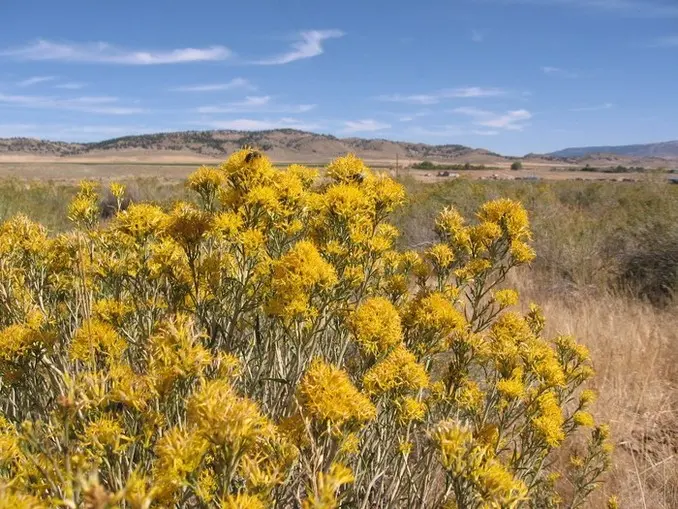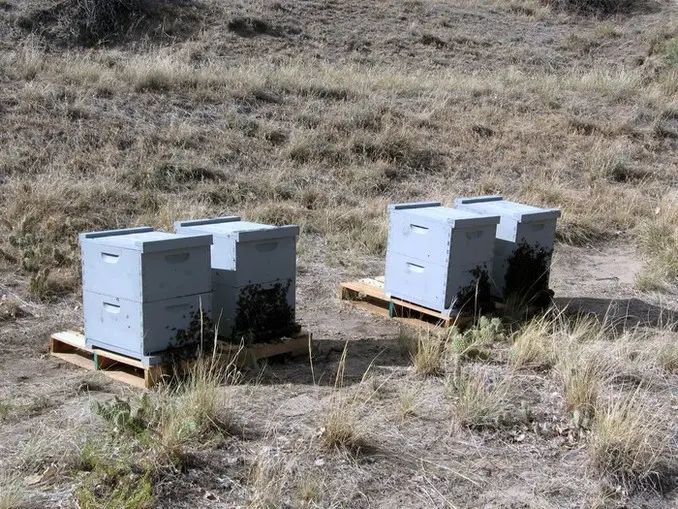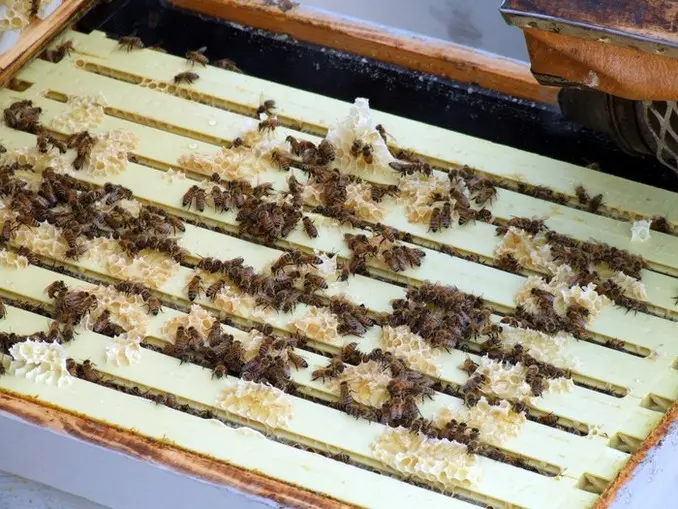Year 5 Late August - Summer's Farewell 🖊️

-As rabbitbrush blooms, the curtain falls on the Wyoming beekeeping season.
The dog days of summer have arrived. With each passing day, daylight dwindles, but the heat lingers on. As for this seasoned beekeeper, things slow down a notch. Here’s why:
- Colony growth eases into a leisurely pace.
- The bees are in good health, taking their time.
- Skunks still persist, despite the cactus barricade.
- Dealing with different frame widths can be a bit of a bother.
- The relentless drought shows no mercy.
Is that a hint of rabbitbrush and gumweed in bloom? The blossoms are a breath of fresh air in our now dry and weary landscape. They offer the bees a modest forage until a hard freeze arrives about a month later. In Wyoming, spotting rabbitbrush signals that the beekeeping season is winding down.
The Bees

-Late August hives from May package bees.
Colony growth hits a gentle stride as the bees synchronize brood rearing with available forage. They’ve mostly shrugged off the division board feeders filled with granulated sugar.
No signs of disease or mite troubles. The colonies:
- Carry on with their productive buzz.
- Boast healthy brood patterns.
When CCD took a toll on my bees, I tossed the frames. Yet:
- I had a plan.
- I repurposed the boxes.
- Crossed my fingers.
So far, there’s no trace of any slow-motion CCD-type virus. Perhaps the virus gracefully fades away on its own. But unleashing fire and Clorox on those boxes might have been a wise move.
And happily, the bees have dodged any pesticide showers. Staying close to town does have its perks!
Skunks
Planting cactus near a hive’s entrance deters skunks, but it’s not foolproof. These night prowlers are:
- Clever.
- Tenacious.
- Small-footed.
- Possess a long reach.
Over time, they find the tiniest gaps between the cactus and feast on the bees. It’s a bit more challenging for them, and they munch on fewer bees, but they persist.
Cactus might be more effective if the hive was surrounded by a dense patch, with a border twice as wide as a skunk is long. Yet, that would be a deterrent for the beekeeper as well.
I’m on the lookout for a non-lethal deterrent that actually works. Any ideas?
Frame Spacing

-11 upstairs. 9 downstairs. Not an interchangeable mix.
These hives are dealing with frames of different widths. The top box boasts:
- 6 frames at 1 1/4″ wide.
- 5 frames at 1 3/8″ wide.
The bottom box features:
- 9 frames at 1 3/8″ wide.
- Plus, a division board feeder.
To encourage comb drawing, exterior frames are rotated. But this causes issues. A wide frame from the bottom can’t slide into the space left by a narrow frame from the top. Rotating a single frame requires shifting many frames, causing disturbance.
Ideally, each brood box should follow the same pattern:
- 3 narrow small cell frames in the center.
- 8 wide large cell frames, 4 on each side.
- A division board feeder replacing 2 wide frames when needed.
Maybe this will resolve the spacing hiccups. Yet, replacement comb still needs drawing for both frame types. I’m not seeing an easy fix, other than sticking to one frame size.
So far, using two different frame widths to mimic a natural broodnest gets a thumbs down.
Drought
The drought rages on:
- The prairie is drier than my eyes have seen.
- Flowing creeks and springs have dwindled to seeps.
- Forest fires persist, casting a smoky haze over the land.
Thankfully, the bees near the Platte River have more than enough water. And for those bees that turn up their antennae at river water, there’s always city water from a garden hose.
-Cheers, D 🍂🐝
